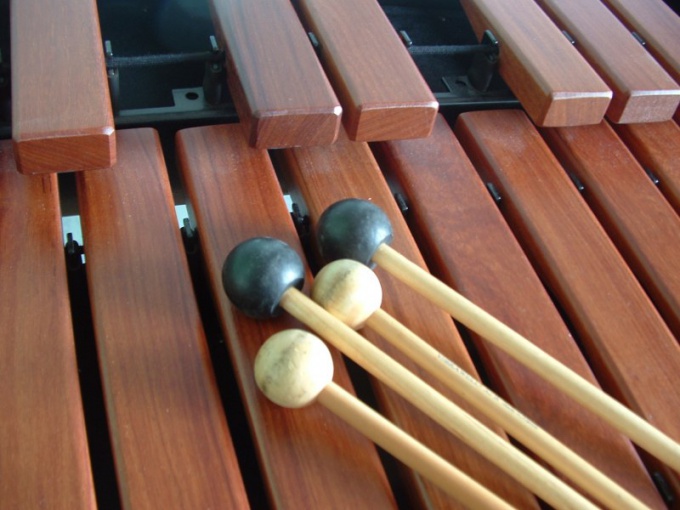You will need
- - xylophone;
- - 2 of the hammer;
- notes for xylophone;
- - table of scales, chords and arpeggios
- - the arrangement of plates.
Instruction
1
Inspect the tool. Plates children's xylophone are usually painted in different colors, to make it easier to navigate. Some tools for adult plates signed, there you will find either a note name or its designation on the stave. Could be a tool where any symbols are missing. In this case, the desired layout of the boards. If not, you will have to identify the sounds by ear. However, this problem can be easily overcome if you learn to play, for example, on the piano. Like the piano, the xylophone plates that are configured on the neighboring sounds are close. The scale can be natural or chromatic. Children's xylophones are tuned in C major, play in other keys, except for natural La minor, such an instrument not to play. Professional xylophone is a chromatic system, that is, the adjacent plates give the interval in semitone increments.
2
Take the hammer. Tip should lie on the nail phalanx of the index finger on the side of it. The thumb is on top. She holds the tip of the hammer, but not presses it. The other fingers are slightly bent and loose. The wrist also should move freely. At the slightest tension the sound is deaf. Try to play any range of first one hand, then the other. Then try to play with two hands, the lower four steps with the left hand, the other – right. You can also alternate hands. For example, in C major is taken to the left hand, d – right, e – left, etc.
3
Notes for xylophone are written in the treble clef. You can take a collection, designed specifically for this tool (for example, "a Textbook for xylophone and snare"), but the most common textbook solfeggio for music school. Your task is to learn the notes, their location on the tool and notation of durations. Whole note is indicated by a white circle, a half – white circle with a stick, a quarter – a black circle with a stick, the eighth note has a tail, the sixteenth – two tails, etc. the Number of beats in each measure should correspond to the size which is written in the beginning of the stave. Try to learn a simple piece. It is important to coordinate the movements of the hands. Start to disassemble the piece, take the sound of the hand that you prefer. In the notes you can put down the appropriate icons. Start playing at a slow pace, just getting in the middle of the planks. When remember the order of the sounds, increase your pace.
4
Learn to make a sliding movement on all boards of a number of. This technique is useful when you are playing virtuoso pieces where you need a bright ending.
